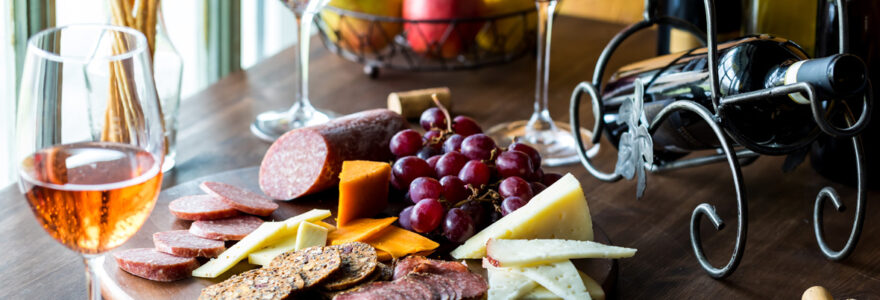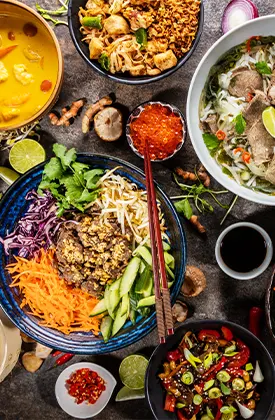Cheese plates have been a great addition to any dinner table since the dawn of dairy, but lately, the plates have become bountiful, beautiful and entertaining. Throwing gourmet cheeses on a plate is not enough. Cheese boards require a bit of thought to make them fun. Most delightful cheese boards overflow with colour-coded arrangements, crackers and crudités. Here are a few tips for creating entertaining pieces using cheeses from a cheese shop to elevate your cheese board game.
Choose Your Cheeses
When you need help with how to start creating your cheese board, begin with picking your cheeses. An entertaining cheese board is all about variety. Start with choosing the cheese variety based on textures and flavours. For instance, a mix of sweet, funky and salty cheeses and a combination of buttery, semi-soft and hard textures make the perfect combination. Aim for at least three to five types of cheeses on your plate to cover your bases and allow the gourmet cheeses to shine without overlapping tastes. When choosing the cheeses, pay attention to colour and shape. You can find pyramid-shaped or round cheeses and blue varieties.
Pick the Right Board
For a cheese board to be entertaining, it requires excellent presentation. While you can choose any board, the bigger the cheese board, the better the display. You want a board that leaves generous room between each cheese to make the plate lush. Get creative with your presentation by mixing up the shapes and textures. Depending on the event's theme, choose from marble, wood or slate boards and improve the look with fun garnishes. Find fresh herbs, rosemary sprigs and edible flowers to make the cheese plate look bountiful and colourful.
Decide on the Theme of the Design
Decide on the theme beforehand instead of overlapping cheeses on the board without a game plan. Think of how you want the plate to look and the design you want. Laying out a plan helps you pick out the accompaniments and mix the cheeses and garnishes that look good together. When choosing ideas, limited colours have a big visual impact compared to mixing multiple colours. For instance, if your theme is green, you can select a green cheese board and add accompaniments like green grapes, sliced cucumbers, celery leaves and olives. The different shades of green enhance the look. If you love a rainbow look for your cheese board, you can arrange them from dark to light colours or in rainbow order. The theme can also be in terms of flavour. You can create two zones on your cheese plate, with one side having sweeter dessert cheeses with dried fruits, nuts and chocolates while the savoury cheese is on the other. You can pair the savoury cheeses with salty accompaniments.
Pick out the Accompaniments
Accompaniments elevate your cheese board but should complement the theme and match the flavours. Fresh fruits and vegetables are always crowd-pleasers since they add contrasting textures and flavours to the cheese board. Focus on colour and seasonality when shopping for accompaniments. For starters, anything that looks fresh and beautiful takes your board over the top. Look for crunchy bits like nuts, or add condiments like mustard, jam or compote. If you are adding a lot of crudités to your cheese board, ensure you have a dip to go with it. When choosing accompaniments, you need to decide whether you want meat or not. If you are expecting vegetarian guests, stay off the meat. However, adding charcuterie and selecting one type of meat to go with each cheese adds flavour to your plate. When selecting meat options, aim for mild options like salami and deli turkey or exciting options like spice coating or pepper. The meat should be in bite-sized portions that are easy to nibble and fold on the board.
Slice Your Cheeses
No guest wants to be the first to crack something open, so if you don't slice your cheeses, your visitors may not enjoy them. Slicing your cheeses allows you to add diverse shapes to your board. For instance, if your cheese comes in blocks, cut them into small squares or triangular slices to add shape. Most blue cheeses are crumbly, so it's best to leave them. Cut the firm and semi-firm cheeses into different styles and create a design by overlapping layers and adding garnishes and accompaniments in between. There are no recipes for creating cheese boards and you don't have to cook anything. After cutting them into small pieces, arrange them creatively to create an artsy look. Start with larger items like whole pieces of cheese and large clusters of fruits or nuts. Fill the spaces with smaller items that add colour and texture to the cheese board. The finishing touches are usually herbs and flowers to create a bountiful look. Fill every square inch of the board, mixing up colours and flavours.
Consider Temperature and Texture
If you want to maximise on the cheese flavours, ensure you serve them at the right temperature. Getting the temperature right also maintains the texture of the gourmet cheeses. Hard cheeses with a firm texture are best served when chilled, while soft cheeses should be at room temperature. When arranging the cheeses, vary the texture of the cheese from smooth and crumbly to firm.
Creating a delightful cheese board is all about presentation, variety and balance. Every cheese plate allows you to try new tricks and accompaniments and experiment with different styles. For instance, mix the plate with seasonal fruits and vegetables to create a vibrant look. Combining different cheese flavours and textures creates a visually-stunning and delicious cheese board. The tips above help you explore different themes depending on the visitors you are hosting. For instance, an adventurous group gives you more options, but that doesn’t mean you cannot spice up vegetarian cheese platters.

